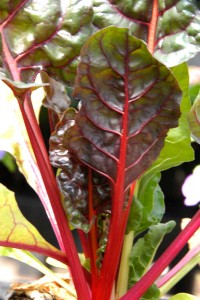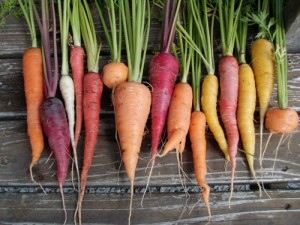Finally, the vegetables we have vigilantly attended for months return the favor with a bounty of the freshest, homegrown vegetables.
Suddenly, making sure nothing goes to waste can become a major chore.
That is why so many of us let the best time for fall planting slip right by; the chance for another harvest late fall or early winter.
July or August would have been better, but a few fast-growing vegetables remain that can yield before the first hard frost – if planted right away. Many short-season vegetables prefer cool weather; some are sweeter after a light frost.
It is also prime time to put in berries and other fruits, hardy herbs and permanent plantings of perennials such as asparagus roots, artichoke plants and rhubarb crowns.
When it comes to fall planting, it is important to become familiar with your weather trends.
These verdant foothills fall under USDA’s hardiness Zone 8a, signifying winter temperatures rarely drop below 10-15 degrees F.
This number is important when choosing any perennials; check a plant’s label to make sure it is hardy to Zone 8a or anything lower than that (such as Zone 6).
Whether planting in spring or late summer/fall, it is necessary to become acquainted with the area’s average first and last frost dates as well as the germination time of the vegetables planted.
They need time to reach maturity before the first killing frost. Here in the mid-Willamette Valley, we look for the first frost Nov. 1-10.
While vegetables requiring 90 days to mature – root crops, large onions, cabbage and brussels sprouts among them – ought to have been planted mid-July through mid-August, there’s still a decent chance of success with those maturing in two months, including early carrots, leeks, smaller turnips, kohlrabi, early cabbages, winter cauliflower, chard and other “healthy greens.” You might just get lucky.
Vegetables that take only 30 days are a solid choice if planted right away. These include bunching onions, greens, beets, radishes and quick-growing broccoli varieties such as ‘Calabrese’ that can be harvested well into November.
Time is subtracting fall planting options at a brisk clip, so it is a good idea to look at the enterprise as an investigation into the wonderful world of “greens.”
 Discover lesser-known lettuce varieties with red speckles or fancy ruffles or venture into such exotic fare as radicchio, kale, arugula and watercress. Build your blood with Swiss chard, Chinese cabbage, spinach and collard greens.
Discover lesser-known lettuce varieties with red speckles or fancy ruffles or venture into such exotic fare as radicchio, kale, arugula and watercress. Build your blood with Swiss chard, Chinese cabbage, spinach and collard greens.
…but wait – there’s more: It is possible to increase your growing season through one or more of the follow practices.
Take advantage of windbreaks and south-facing walls to harness more solar energy.
Cold frames are worth considering. They can take many forms, from unheated greenhouses to nailing together a wooden box without bottom or top, set directly on the ground facing south and sloping from a height of about 18 inches at the back to about 12 at the front – a good angle for rain runoff and heat gathering.
An old window sash or piece of fiberglass or polyethylene makes a fine lid, but lift it on sunny days. During a cold snap, tuck the whole thing in with burlap or heavy cloth.
Raised beds, created out of stone, brick, concrete or lumber and filled with healthy soil, make for easier access and soil temperatures that can be 8-12 degrees warmer than surrounding garden areas.
An inch or two of mulch provide a blanket of protection over a plant’s root system, discourages weeds, evaporation and erosion.
It can be peat moss, compost, landscape fabric or even shredded newspapers. With the onset of spring, work it in or rake it away so the soil can start warming for the next planting season.
If you are just done with it for the year, at least enrich your soil by planting a winter cover crop – AKA “green manure” – across vacant areas of your garden. It will also smother out weeds and other pests and you simply worked into the soil come spring. These can be Austrian winter peas, certain ryes, vetches and clovers, winter wheat and even fava beans.
